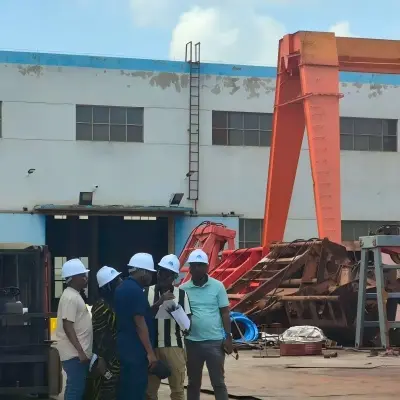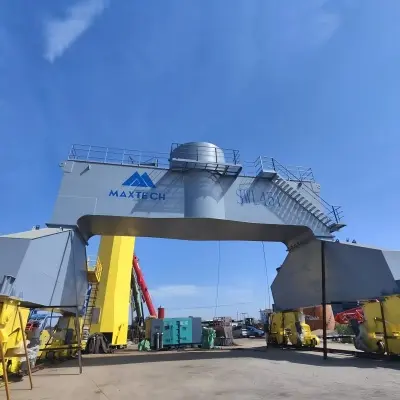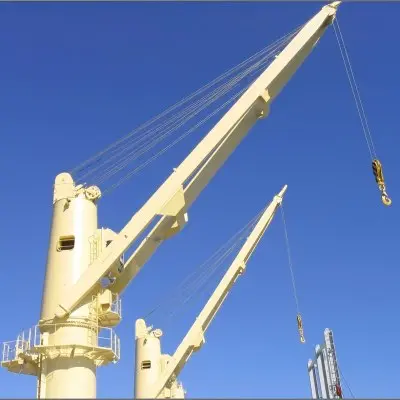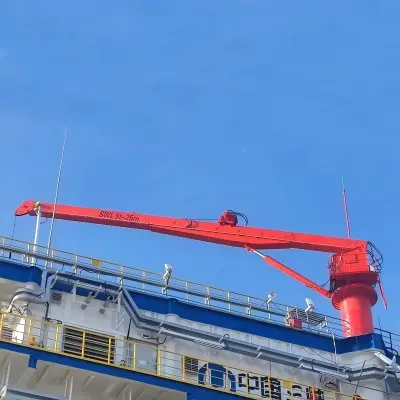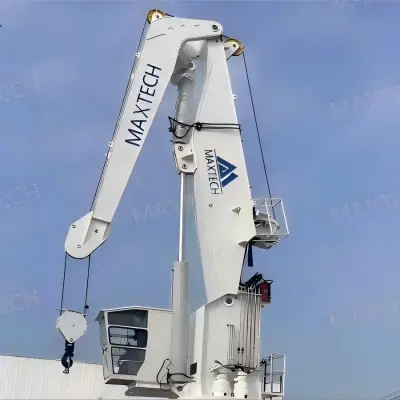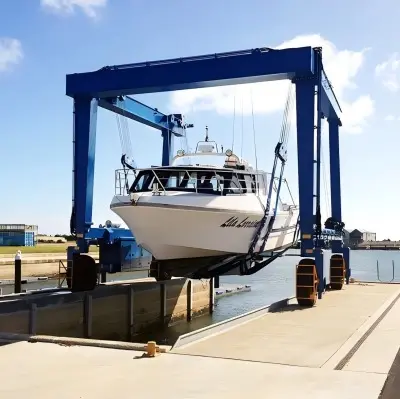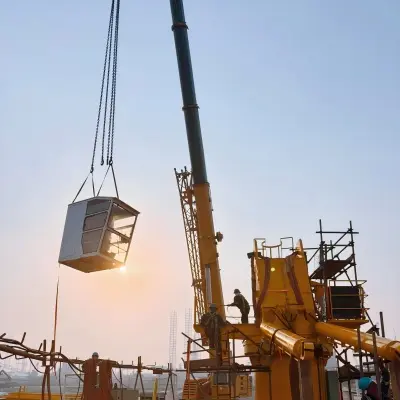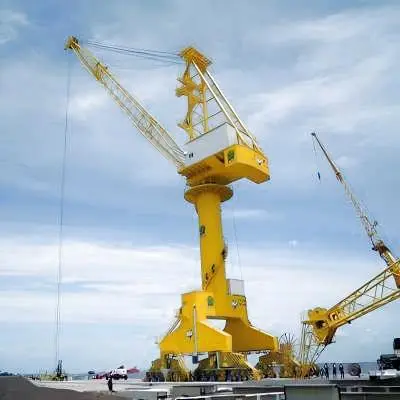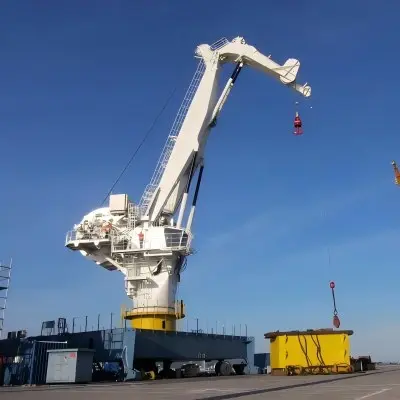0102030405
Active Wave Compensation Technology of Marine Cranes: A Vital Tool for Operations in Complex Sea Conditions
2025-05-14
On the unpredictable ocean, ship operations face challenges, especially from ocean waves. Marine cranes, like Ship Deck Cranes and Offshore Cranes, are crucial for maritime work, but their efficiency and safety are affected by waves. Active wave compensation technology has become essential for stable Crane operations in complex sea conditions.
I. The Principle of Active Wave Compensation Technology
This technology senses ship movements caused by waves in real-time and adjuSts Crane actions to offset wave - induced motion. It consists of sensors, controllers, and actuators. Sensors, such as gyroscopes, monitor ship motion and send data to the controller. The controller then calculates the commands for actuators, like hydraulic cylinders or motors, to precisely adjust the crane's boom or hook, ensuring cargo stability during hoisting. This principle applies toHydraulic Cranes, Electrical Hydraulic Cranes, and other types.
II. The Advantages of Active Wave Compensation Technology
(I) Enhanced Operational Safety
In traditional operations, wave - induced ship sway risks cargo collisions and falls, endangering lives and property. Active wave compensation reduces cargo sway, improving safety, which is crucial for Ship Cranesand Provision Cranes in daily ship operations.
(II) Improved Operational Efficiency
Waves force operators to slow down and adjust frequently, reducing efficiency. With this technology, cranes operate stably in rough seas. Operators can work faster, improving efficiency for Cargo Cranes, Cargo Bulk Cranes, and Lifting Cranes, bringing economic benefits.
(III) Broadened Environmental Adaptability
Harsh sea conditions once limited crane operations. Active wave compensation allows cranes to work in severe conditions, expanding maritime operations. This benefits Offshore Cranes in oil extraction and wind turbine installation.
III. Application Examples
In offshore oil platforms, Ship Deck Cranes with this technology safely transfer supplies. Provision Cranes also use it for better efficiency. In offshore wind power, Offshore Cranes install large turbine components accurately. Telescopic Boom Cranes and Knuckle Boom Cranes, combined with the technology, meet specific installation needs.
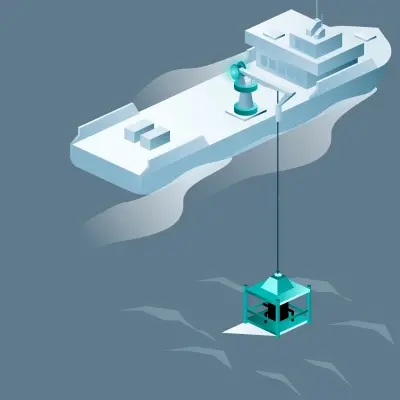
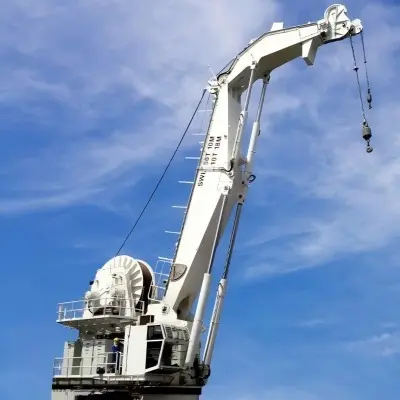


IV. Characteristics of Active Wave Compensation Technology in Different Types of Cranes
(I) The Combination of Hydraulic Cranes and Active Wave Compensation Technology
Hydraulic Cranes are widely used in marine operations due to their strong lifting capacity. When combined with active wave compensation technology, the hydraulic system can quickly respond to the controller's commands and achieve precise adjustment of the boom and hook by accurately controlling the pressure and flow of the hydraulic fluid. Their powerful power output allows them to stably hoist heavy loads while compensating for wave motion, performing excellently in scenarios such as hoisting large-scale equipment on offshore oil extraction platforms and hoisting large wind turbine towers during offshore wind power equipment installation.
(II) The Advantages of Electrical Hydraulic Cranes under Active Wave Compensation Technology
Electrical Hydraulic Cranes integrate the advantages of electricity and hydraulics. With the support of active wave compensation technology, they have higher control precision and response speed. The electric drive part provides a stable energy source for the system, while the hydraulic part is responsible for executing precise actions. In some operations with extremely high requirements for hoisting accuracy, such as hoisting offshore precision instruments, Electrical Hydraulic Cranes can minimize wave interference with the help of active wave compensation technology and ensure the accuracy of cargo hoisting.
(III) The Synergy of Other Types of Cranes and Active Wave Compensation Technology
Stiff Boom Cranes, due to their rigid boom structure, can better maintain stability during the hoisting process when combined with active wave compensation technology, making them suitable for hoisting large, regularly shaped cargo. The mobility of Mobile Cranes and Mobile Rail Cranes, combined with active wave compensation technology, enables them to quickly adjust to different operating positions and adapt to complex offshore operating environments. When Jetty Cranes, Dock Cranes, and Shipyard Cranes are engaged in ship maintenance and construction operations, active wave compensation technology can help them overcome the impact of waves on the position of ships and improve operational efficiency and quality. As important equipment for large-scale offshore hoisting operations, Floating Cranes rely on active wave compensation technology as the key to safe and efficient operations in complex sea conditions.
V. Development Trends of Active Wave Compensation Technology
The technology will integrate with intelligent control, predicting wave trends for better compensation. Research will focus on improving component durability and using redundant designs for reliability. As the technology matures, cost - reduction through optimized design and mass production will enable wider application, enhancing the entire marine operation industry.
Active wave compensation technology revolutionizes maritime operations. It improves safety, efficiency, and adaptability, and will play an even more significant role in future marine development.

